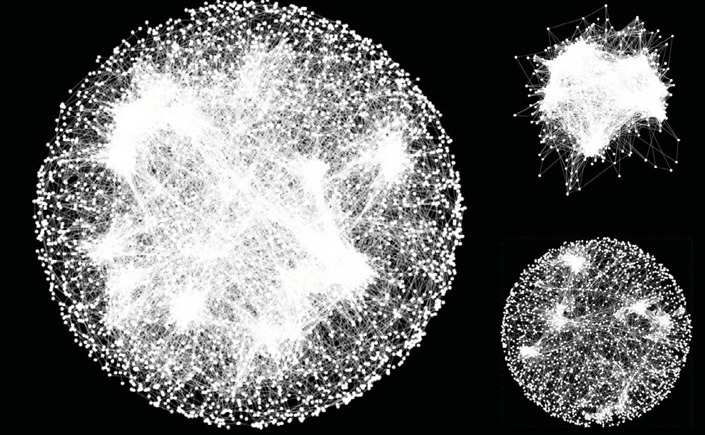
Genetic interaction maps, like the ones above, provide a computer model to show how the functions of different genes in a yeast cell connect. Credit: University of Minnesota
Studying the way genes “socialize” could ultimately help scientists develop better treatments for diseases.
In a recent study, researchers from the University of Minnesota and University of Toronto collaborated to investigate the way genes function — not as independent actors, but as part of larger social networks. The team created the first complete genetic interaction network of a yeast cell, which begins to explain how thousands of genes within the cell coordinate with one another to orchestrate life at a cellular level. The study established a set of principles that scientists can use in creating genetic interaction maps across many different species, including humans, to learn more about how genes behave.
This technology may ultimately help scientists understand the genetic roots of diseases and aid in developing treatments to counter those diseases. For example, scientists could use gene interaction maps to develop cancer therapies that target only sick cells in the body, leaving the healthy ones untouched.
“Our work in yeast provides a blueprint for how we can learn about the human genome through systematic manipulation in cell lines,” said Chad Myers, Ph.D., associate professor of computer science and engineering with CSE.
Read about the research in Vice Motherboard.